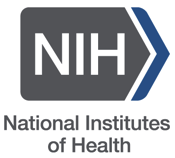

Qiagen, a Netherlands based holdings company announced that its artus CMV RGQ MDx Kit for human cytomegalovirus (CMV) has been approved by the US Food and Drug Administration (US FDA) under a full premarket approval (PMA). The test is the only FDA-approved PCR-based assay optimised for low- to mid-throughput testing of CMV. With a turn-around time of approximately three hours, the assay provides faster results than other PMA approved tests. artus CMV RGQ MDx runs on Qiagen’s Rotor-Gene Q MDx real-time PCR platform, which was cleared by the FDA in 2012 and is a member of the QIAsymphony modular family of automated instruments.
“We are very pleased to add yet another FDA approved diagnostic kit to our menu of FDA approved or cleared content for a core element of our flagship QIAsymphony modular family of automated instruments. This flexible platform is driving the dissemination of molecular diagnostics by delivering efficient, reliable workflows in low- to mid-throughput settings, which represent the largest market opportunity in terms of placements,” said Peer M. Schatz, chief executive officer of Qiagen. “Our artus CMV assay is the fastest test approved for quantifying CMV viral loads in organ transplant patients. In addition to helping save lives with its clinically proven usefulness, the FDA-approved artus test creates economic value by reducing the time and money many labs and hospitals currently must spend validating lab-developed CMV tests and analyte-specific reagents. More than one million CMV tests are performed on US transplant patients each year and we believe the artus CMV kit will provide significant value for laboratories, patients and the healthcare system.”








